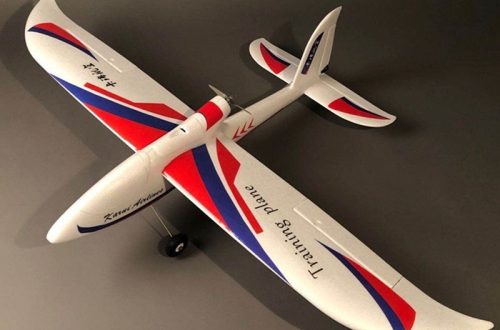Part 1: The Benefits of Interactive Play for 3 Year Olds
Interactive playthings offer a range of benefits for 3 year olds, helping to support their development in various ways.
1. Cognitive Development:
Interactive playthings are essential for stimulating a child’s brain and promoting cognitive development. Activities such as counting, matching, sorting, and problem-solving, often found in interactive toys, can significantly enhance a child’s cognitive skills.
By engaging with these toys, children are actively using their minds to process information, make decisions, and solve problems. This mental stimulation helps to improve their memory, concentration, and critical thinking abilities.
Moreover, interactive toys often encourage children to use their imagination and creativity. As they explore different possibilities and create their own scenarios, they are developing their problem-solving skills and their ability to think outside the box.
2. Social and Emotional Development:
Interactive playthings can also play a crucial role in a child’s social and emotional development. Engaging in pretend play with other children can help them learn about empathy, cooperation, and communication skills.
For example, when playing with dolls or toy kitchens, children can learn to share, take turns, and negotiate. They can also explore their own emotions and learn to express them in a healthy way.
Additionally, interactive toys can help to build a child’s self-confidence and self-esteem. As they master new skills and overcome challenges, they develop a sense of accomplishment and pride. This can boost their confidence and encourage them to try new things.

Part 2: Types of Interactive Playthings for 3 Year Olds
When it comes to interactive playthings for 3 year olds, there is a wide variety to choose from, each offering different types of interactive play experiences.
1. Pretend Play Toys:
Pretend play toys are essential for fostering a child’s imagination and creativity. By imitating real-life activities and roles, children can explore their own thoughts and feelings, develop social skills, and learn about the world around them.
Play kitchens, for example, allow children to pretend to be chefs or restaurant owners, preparing meals and serving customers. Dress-up costumes encourage children to take on different roles and explore different identities. Dollhouses provide a miniature world for children to create stories and scenarios.
Through pretend play, children can develop their language skills, storytelling abilities, and problem-solving skills. They can also learn about social interactions, such as sharing, taking turns, and cooperating with others.
2. Building and Construction Toys:
Building and construction toys are another valuable tool for a child’s development. These toys encourage children to use their hands and minds to create structures and designs. This type of interactive play helps to strengthen fine motor skills, spatial awareness, and engineering concepts.
Blocks, magnetic tiles, and LEGO sets are all popular examples of building and construction toys. These toys allow children to experiment with different combinations and create unique structures. As they build and experiment, children are developing their problem-solving skills, creativity, and spatial reasoning.
Building and construction toys can also help children develop their patience and perseverance. As they work to create complex structures, they learn to overcome challenges and persevere through setbacks.
Part 3: Interactive Playthings for Outdoor Fun
It’s important for 3 year olds to have opportunities for interactive play outdoors, and there are several types of playthings that can make outdoor play fun and stimulating.

1. Ride-on Toys:
Ride-on toys are a fantastic way for 3-year-olds to enjoy outdoor play while developing important physical skills. Scooters, tricycles, and balance bikes are all great options for encouraging coordination, balance, and gross motor skills.
As children learn to ride these toys, they are strengthening their muscles, improving their balance, and developing their spatial awareness. Riding toys can also be a great way for children to socialize and have fun with their friends.
When choosing ride-on toys, it is important to select options that are age-appropriate and safe. Look for toys that are sturdy, have appropriate safety features, and are easy for your child to use.
2. Sand and Water Play Toys:
Sand and water play can be incredibly engaging for 3-year-olds and offer a variety of benefits. Sandboxes, water tables, buckets, and shovels provide opportunities for sensory exploration, imaginative play, and cooperative interactions with other children.
Playing with sand and water can help children develop fine motor skills, sensory awareness, and problem-solving skills. It can also encourage creativity and imagination as children create their own sandcastles, water channels, and other imaginative structures.
Sand and water play can also be a great way for children to socialize and interact with other children. Playing together can help children develop important social skills such as sharing, cooperation, and communication.
When choosing sand and water play toys, look for options that are durable, easy to clean, and age-appropriate. Consider the size of your backyard or play area when selecting toys, as you will want to ensure that there is enough space for your child to play comfortably.
Part 4: Educational Interactive Playthings
Interactive playthings can also serve as educational tools for 3 year olds, helping them learn new concepts and skills in a fun and engaging way.
1. Alphabet and Number Toys:
Alphabet and number toys are essential tools for introducing young children to the basics of literacy and numeracy. These toys can help children recognize letters and numbers, develop their vocabulary, and learn counting skills.
Alphabet puzzles, for example, can help children learn the alphabet and recognize letter shapes. Number blocks can introduce children to numbers and counting. Counting games can help children develop their number sense and counting skills.
By incorporating alphabet and number toys into your child’s playtime, you can provide them with a solid foundation for future learning. These toys can make learning fun and engaging, helping children develop a positive attitude towards education.

2. STEM Toys:
STEM (Science, Technology, Engineering, and Mathematics) toys are becoming increasingly popular for young children. These toys introduce children to basic STEM concepts in a playful and age-appropriate manner.
STEM toys can help children understand cause and effect relationships, learn about simple machines, and develop problem-solving skills. For example, building blocks can introduce children to engineering concepts, while simple science experiments can help them understand basic scientific principles.
By incorporating STEM toys into your child’s playtime, you can help them develop a curiosity about the world around them and a passion for learning. These toys can also prepare them for future academic success.
Part 5: Using Interactive Playthings to Foster Creativity
Interactive playthings can be powerful tools for fostering creativity in 3 year olds, helping them explore their imaginations and express themselves in various ways.
1. Art and craft supplies:
Interactive playthings such as crayons, markers, paints, and modeling clay allow children to engage in open-ended artistic exploration, sparking their creativity and self-expression.
2. Musical instruments:
Musical instruments designed for young children, such as drums, xylophones, and shakers, can provide opportunities for interactive play and creative expression through music and rhythm.
Part 6: Choosing Interactive Playthings for 3 Year Olds
When selecting interactive playthings for 3 year olds, it’s important to consider their interests, developmental stage, and safety.
1. Age-appropriate design:
Look for playthings that are specifically designed for 3 year olds, with features and functions that are suitable for their developmental level.
2. Safety considerations:
Ensure that interactive playthings are made from non-toxic materials and are free from small parts that could pose a choking hazard. It’s also important to supervise young children during playtime to ensure their safety.
In conclusion, interactive playthings can provide 3 year olds with a wealth of stimulating and enjoyable play experiences, supporting their development and fostering creativity, social skills, and learning. Whether indoors or outdoors, these playthings can offer countless opportunities for exploration, imagination, and fun.




